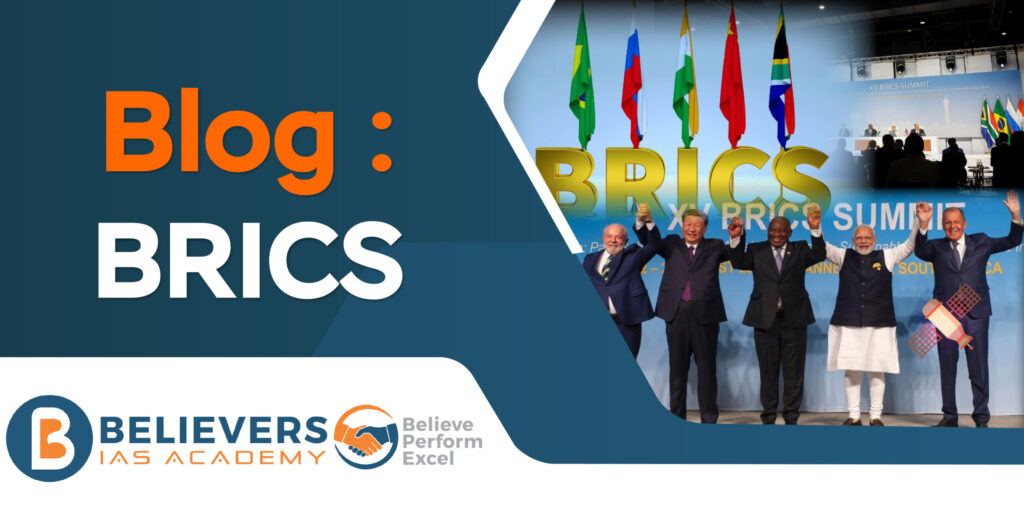BRICS: A Group of Major Emerging Economies
BRICS is a grouping of five major emerging economies: Brazil, Russia, India, China, and South Africa. The term “BRICS” was coined by Jim O’Neill, a Goldman Sachs economist, in 2001 to recognize the impact these four rapidly expanding economies would have on the world economy. South Africa joined in 2010, and the acronym was changed to BRICS. Despite their geographical diversity, these countries share enormous populations, sizable landmasses, and quickly growing economies. They are seen as emerging powers capable of influencing the global political and economic landscape.
The Structure of BRICS
At the core of the BRICS organization is high-level political and economic collaboration among its member nations. While not a formal intergovernmental body like the United Nations or the European Union, the BRICS operates through summits, meetings, and institutional arrangements. The key elements of the BRICS structure include:
- Summits: The leaders of the BRICS member nations gather annually to discuss various topics such as economic growth, global governance, and geopolitical concerns.
- Troika System: A troika consisting of the current summit host nation, the prior host nation, and the forthcoming summit host nation directs the organization’s operations and oversees inter-summit communication and coordination.
- Ministerial Meetings: Throughout the year, the BRICS member nations hold several ministerial gatherings to promote cooperation in areas such as international affairs, finance, trade, and health.
- Working Groups and Tracks: The BRICS has established working groups and tracks to address specific challenges related to the economy, banking, anti-terrorism, science, and technology. These groups collaborate, conduct research, and hold discussions to achieve specific objectives.
The Historical Background of BRICS
The term “BRIC” was introduced in 2001 by Jim O’Neill to refer to the four rapidly expanding economies: Brazil, Russia, India, and China. Their interactions began when the foreign ministers of these nations met at the UN General Assembly in 2006. The first official BRIC summit, focusing on the world economy and financial institution reform, was held in Russia in 2009. South Africa joined the group in 2010, leading to the change from BRIC to BRICS. In subsequent years, the BRICS signed agreements establishing the New Development Bank and the Contingent Reserve Arrangement to promote financial cooperation and stability among member countries.
The Objectives of BRICS
The main goals of the BRICS group are:
- Promoting economic development, growth, and collaboration among member nations.
- Enhancing global financial stability through the Contingent Reserve Arrangement and the New Development Bank.
- Advocating for the reform of global governance organizations to reflect the evolving nature of the world.
- Addressing geopolitical issues and promoting peaceful conflict resolution.
- Promoting cooperation between emerging nations (South-South cooperation) through best practice sharing, technology transfer, and capacity building.
- Exploring alternative financial efforts to reduce reliance on Western-dominated institutions.
- Promoting innovation and technology development to address shared challenges in various sectors.
- Raising human development indicators, such as healthcare, education, and poverty eradication.
- Addressing environmental issues, such as climate change and sustainable development, through renewable energy and ethical resource management.
The New Development Bank
The New Development Bank (NDB) was formed by the BRICS nations to support infrastructure and sustainable development initiatives in developing and rising economies. Its key characteristics are:
- Main goal of financing infrastructure projects in transportation, energy, water, and urban development.
- Cooperative ownership and decision-making among all BRICS countries.
- Financed by capital contributions from member nations and global financial markets.
- Focus on projects that encourage social inclusion, environmental standards, and sustainable development goals.
- Governed by management, a Board of Directors, and a Board of Governors with decision-making based on consensus.
- Provides loans and technical assistance to member and non-member nations for approved projects.
- Concentration on financing BRICS projects, but open to initiatives in other developing and rising economies.
Contingent Reserve Arrangement
The Contingent Reserve Arrangement (CRA) is a financial arrangement established by the BRICS countries to provide a safety net against balance of payments difficulties and external financial pressures. Its key features are:
- Assistance to member nations facing balance of payments issues.
- Member nations contribute to the CRA’s resources based on specified quotas.
- Quotas determined by member nations’ economic potential and size.
- Loan mechanism offering financial assistance through precautionary and short-term liquidity lines.
- Member nations and the CRA determine the terms and conditions of borrowing.

